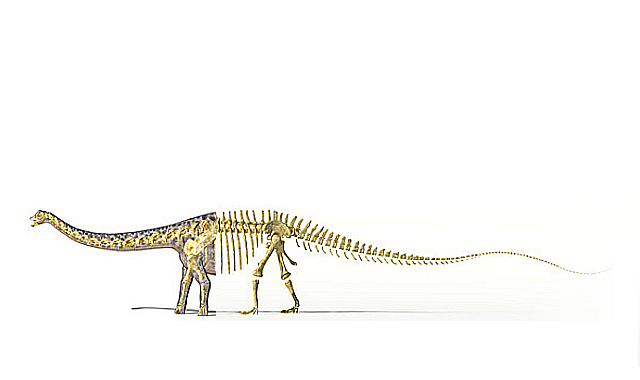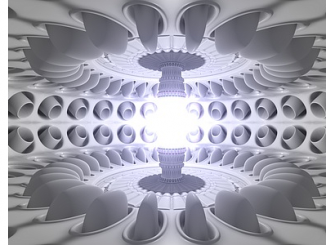
Many technology enterprises are having an adamant time dealing with ever-shorter development cycles. They’re going to have to restructure fundamentally. But what is the right strategy? And can they handle such a significant change?
The product development cycles are becoming shorter for businesses that make a living by creating and selling complex software and electronics systems. Consider, for example, the automobile industry. Developing a new car used to take six to seven years. Now, three or four years is the maximum. A similar acceleration has occurred throughout the business world.
Not everyone has successfully adapted to the new demands of this increasingly hectic environment. While some companies excel, others fall hopelessly behind, and once this happens, it can be enormously challenging to regain one’s footing. In competitive areas like mobile devices and automobiles, for nearly every product in development, many similar products are already available from other vendors. And that’s the good news! The bad news is that some companies fail to deliver even the very first release of their systems.
What is the reason for this disparity? Why do some companies fail miserably while others shine and thrive? The answer appears to lie in the presence or absence of an ability to respond effectively to a quickly changing market environment. The guiding principle in the current technology development market is “innovate or perish,” and that means today’s product vendors are faced with the inescapable task of determining just how much disruptive innovation they need to embrace.
We should accept and recognize that a fundamental division exists among these companies. We might think of this as “type A” versus “type B.” At one end of the scale, there are type A vendors with product lines that change very little. These vendors provide their customers with the same products over long periods. Their buyers do not expect any groundbreaking or revolutionary innovations. Instead, they expect reliable supply and high quality they can always count on. Examples of such products include car steering wheels equipped with simple contacts and controls and elementary electronic components like sensors or essential semiconductors. The design process for these products is based on continuity and requires strict quality control while keeping risks small and maintaining high-cost awareness. The organizations that make these products take pride in delivering quality products at reasonable prices over the course of decades.
At the other end of the scale, there are “type B” vendors delivering high-end, sophisticated systems that offer complex functionality as consumer devices or as intermediate parts for other vendors, who use them as components to create their own, even more sophisticated products. Such products are often innovative game-changers using the latest scientific and technological achievements. They consist of many mechanical and electronic parts and subsystems, managed by often extraordinarily complex software. Typical examples include mobile consumer products such as smartphones and tablet computers, submodules like navigation systems or active safety systems in cars (comfortable power steering wheels, ABS, etc.), various onboard systems in the aviation industry, and so on. Creating such products requires a willingness to take risks that are difficult to estimate. Many innovative systems represent uncharted territory for their engineers, and unexpected difficulties can arise at any point during the design process. The organizations that develop these technologies aspire to create new markets and market niches, and their disruptive products find technology-savvy buyers who are willing to pay high prices for sophisticated, innovative systems.
Neither of these two organizational strategies, type A or type B, can be singled out as “better” without further consideration of various factors at play in the surrounding environment, such as the market structure, historical market data, future market outlook, the market potential for products of the above types, and the risk inclination of the shareholders who own a stake in the companies.
In certain markets, a risk-averse, conservative product strategy can be the best choice. But globalization’s constant progress, especially the expansion of low-cost, highly skilled labor in emerging economies such as China and India, poses new challenges to all market players. In particular, traditional vendors face fierce competition from new-generation vendors who rapidly improve their quality management while maintaining low labor costs. Since a risk-averse strategy often results in low-tech products, those products can be quickly reverse-engineered and sold at a lower price using cheap labor that is readily available in emerging economies.
In a globalized business world, the old-fashioned, tradition-savvy, and risk-averse type A organizations appear rather like the huge, plant-eating dinosaurs that walked the earth millions of years ago, just like — to name one apt example — the Diplodocus. The main advantage enjoyed by Diplodocus in the continuous struggle for survival was its large size. But this came at the cost of speed and agility. Sauropods were giant, slow-moving colossuses. Their weight alone, which could be more than 100 tons, was frightening to predators such as the Tyrannosaurus Rex (T-Rex), which was nimble and agile but smaller and lighter. Still, T-Rexes often managed to hunt down huge prey, including Diplodocus, especially when their giant victims were hurt or weak. The T-Rex has long fascinated moviemakers, novelists, comic book writers, and more, who consistently portray this “king of the dinosaurs” as fast, intelligent, and deadly.
Because of all the changes in the global business environment, many type A vendors — the reliable, slow-moving, giant Diplodocuses — now wish to become type B-organizations: fast-moving, agile T-Rexes.
The question, therefore, becomes: what does it take to be a “T-Rex company”?
The answer is that becoming a completely different “beast” requires adopting a totally different mindset. It means adopting the attitude and outlook behind what is often referred to as the “corporate culture,” which isn’t a monolithic culture but one that varies according to an organizational type. For organizations that create innovative products, the product development processes must be the key to the riddle.
In the “real world,” certain fundamental organizational forms correlate nicely with our ad hoc typology of “type A” and “type B” vendors. A good classification is provided by the PMBoK standard from the Project Management Institute (PMI), which distinguishes the following two basic and generic types of organizations:
- Matrix organizations
- Projectized organizations
A matrix organization means the employees have two or more superiors, e.g., project managers and functional managers. This type of organization can have various shapes:
- The weak matrix, in which a certain level of redundant responsibility is established, but the project managers are established as strong and autonomous leaders.
- The strong matrix, in which project managers don’t exist; project coordinators merely assist their strong line managers.
- The balanced matrix, in which resources are assigned to various teams (line or functional) by certain authorities, such as committees or panels.
In projectized organizations, by contrast, the employees usually report solely to their project managers, who in turn report to the CEO or to a very high-level functional manager (such as a Vice President).
So, how does this typology correspond with our “A” and “B” organizational types?
Type A organizations require a stable, risk-averse, quality-aware structure. Type A vendors are usually traditionally strong line organizations in which line managers are accustomed to constantly performing repetitive tasks that are easily delegated. This harmonizes effectively with what happens in a matrix organization, where the responsibility is often intentionally blurred and unclearly defined. For many tasks, sometimes trivial, managers on the same hierarchical level must act in consensus. Large risks are distributed among many individuals. The line managers are bureaucrats who are primarily interested in maintaining the status quo.
Thus, type A organizations correlate well with matrix organizations.
Type B organizations need a very fast-reacting, goal-oriented, risk-taking, innovation-driven culture. Bureaucrats cannot function in such an environment. They will never be able (nor will they be willing) to take the necessary responsibility. Instead, highly skilled and agile teams of experts can be employed to manage and limit the risks, and responsibilities must be assigned to single individuals.
Only the projectized organization type can deliver the kind of agility that a type B-organization requires to survive.
The differences between these two organizational types are so severe that it appears almost impossible for a type A organization to become a type B organization. When a giant Diplodocus found itself running out of food, perhaps it wished to become a nimble sprinter. Perhaps it dreamed of becoming more like its old foe, the T-Rex.
But can a “Diplodocus company” really transform itself into a “T-Rex-company”?
Since technology companies fully rely on their experts, these employees are of utmost importance to such changes. If risk-taking is essential to the successful development of groundbreaking, innovative products, then expert employees must be encouraged to take risks and be rewarded for doing so. The system of personal incentives must change radically. It is obviously impossible to achieve that change in a strong matrix organization since matrix organizations are designed to resist changes.
And so we have our answer. The upshot is clear. The matrix must go. The Diplodocus must die.
Then a company must resurrect as a projectized T-Rex that will eagerly move on to hunt and catch its new prey.
How can such an enormous organizational transition be successfully managed? What does the target architecture of a T-Rex-company look like? I will examine and answer this question in detail in the next Project Crunch article.
I am a project manager (Project Manager Professional, PMP), a Project Coach, a management consultant, and a book author. I have worked in the software industry since 1992 and as a manager consultant since 1998. Please visit my United Mentors home page for more details. Contact me on LinkedIn for direct feedback on my articles.





Be the first to comment